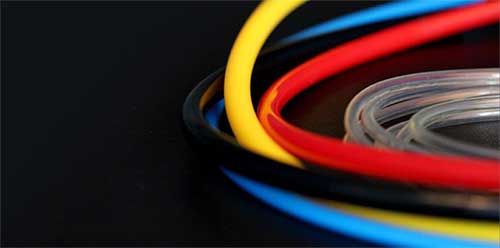Our plasticisers are liquid resins that when blended into with plastics and rubber, increase the plasticity, flexibility while reducing brittleness. Plastics such as PVC would not be able to bend or flex without shattering unless they had plasticisers added.
Plasticisers are grouped according to their molecular weight. Monomeric plasticisers are low molecular weight plasticisers and are a thin liquid at room temperature. Higher molecular weight plasticisers are called polymeric plasticisers. Generally, a plasticiser with a molecular weight below 500 is considered a monomeric plasticiser. There are other ways of segregating plasticisers, such as categorizing according to the dibasic acid in the formulation. Plasticisers based on adipic acid for example are known as adipates and share characteristics, such as being suitable for food contact applications.
Monomeric Plasticisers, due to their low molecular weight mix easily with resins such as PVC and have the benefit of being more efficient than polymeric plasticisers. In other words, less monomeric plasticiser is needed than polymeric plasticiser to reduce hardness. The negative for monomeric plasticisers is that they are more susceptible to migration and can be extracted from the host polymer.
Polymeric plasticisers, are high molecular weight resins that have a much higher level of extraction resistance compared to monomeric plasticisers. Extraction of plasticisers can occur through, exposure to heat, exposure to water, or exposure to a wide range of chemicals, including oils and solvent. While there are plasticisers that have good resistance to a specific chemical, polymeric adipate plasticisers have extraction resistance to a wide range of chemicals.
Townsend Chemicals provides a range of RE-PLAS polymeric plasticisers that can be used to improve flexibility in coatings, sheet, profile and mouldings. Good compatibility allows for easy compounding of rubber and PVC. End applications include gaskets, fabric coatings, film and food wrap, hoses and more.
